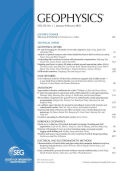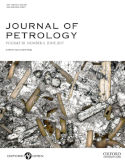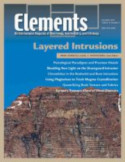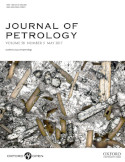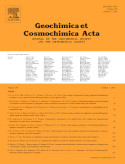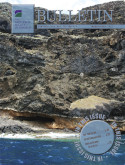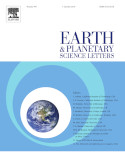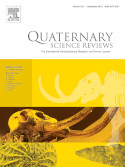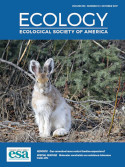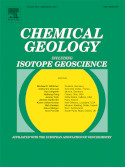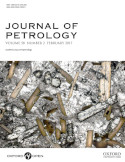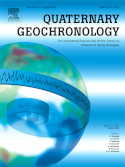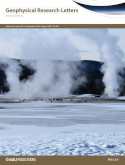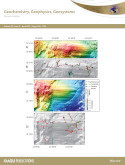Contact Us





Department of Geology and Geophysics
1000 E. University Ave.
Laramie, WY 82071-2000
Phone: (307) 766-4141
Fax: (307) 766-6679
Email: geol-geophys@uwyo.edu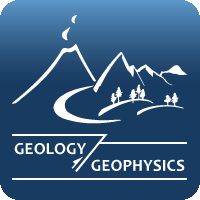
Joint probabilistic petrophysics-seismic inversion based on Gaussian mixture and Markov chain prior models - Grana
Seismic reservoir characterization focuses on the prediction of reservoir properties based on the available geophysical and petrophysical data. The inverse problem generally includes continuous properties, such as petrophysical and elastic attributes, and discrete properties, such as lithology/fluid classes. We have developed a joint probabilistic inversion methodology for the prediction of petrophysical and elastic properties and lithology/fluid classes that combined statistical rock physics and Bayesian seismic inversion. The elastic attributes depend on continuous petrophysical variables, such as porosity and clay content, and discrete lithology/fluid classes, through a nonlinear rock-physics relationship together. The seismic model relates the elastic attributes, such as velocities and density, to their seismic response (reflectivity, traveltime, and amplitudes).
238U–230Th–226Ra–210Pb–210Po Disequilibria Constraints on Magma Generation, Ascent, and Degassing during the Ongoing Eruption of Kīlauea
Sims & Phillips. The timescales of magma genesis, ascent, storage and degassing at Kīlauea volcano, Hawai‘i are addressed by measuring 238U-series radionuclide abundances in lava and tephra erupted between 1982 and 2008. Most analyzed samples represent lavas erupted by steady effusion from Pu‘u ‘Ō‘ō and Kūpahianaha from 1983 to 2008. Also included are samples erupted at the summit in April 1982 and March 2008, along the East Rift Zone at the onset of the ongoing eruption in January 1983, and during vent shifting episodes 54 and 56, at Nāpau crater in January 1997, and Kane Nui O Hamo in June 2007.
Quantitative Textural Insights into the Formation of Gabbro in Mafic Intrusions - Cheadle
Rock textures provide a key to deciphering the physical processes by which gabbro forms in mafic intrusions. Developments in both direct optical and crystallographic methods, as well as indirect magnetic fabric measurements, promise significant advances in understanding gabbroic textures. Here, we illustrate how bulk magnetic fabric data, particularly from intrusions with sparse silicate-hosted magnetite, may be used to extend direct crystallographic observations from thin sections. We also present a scheme for characterizing crystallographic foliation and lineation and use this to suggest that the strength of gabbro plagioclase foliations and lineations varies significantly with geodynamic environment.
Understanding degassing and transport of CO2 rich alkalic magmas at Ross Island, Antarctica using olivine-hosted melt inclusions - Sims & Phillips
Volatiles play an important role in magmatic and volcanic processes. Melt inclusions are a powerful tool to study pre-eruptive volatiles, but interpretation of their H2O and CO2 variations can be difficult. The H2O and CO2 contents of melt inclusions from nine basanites from Hut Point Peninsula, Mt Terror and Mt Bird on Ross Island, Antarctica, were studied to understand better the behavior of volatiles in the magmas and to provide insight into magma transport and storage processes. Ninety olivine-hosted (Fo78–-88) melt inclusions were examined along with the composition of the associated bulk-rock samples.
Geochemical characterization of critical dust source regions in the American West - Aciego, Sims and Scott
The generation, transport, and deposition of mineral dust are detectable in paleoclimate records from land, ocean, and ice, providing valuable insight into earth surface conditions and cycles on a range of timescales. Dust deposited in marine and terrestrial ecosystems can provide critical nutrients to nutrient-limited ecosystems, and variations in dust provenance can indicate changes in dust production, sources and transport pathways as a function of climate variability and land use change. Thus, temporal changes in locations of dust source areas and transport pathways have implications for understanding interactions between mineral dust, global climate, and biogeochemical cycles.
Hadean origins of Paleoarchean continental crust in the central Wyoming Province-Frost, C., Frost B., & Swapp
The scarce remnants of Earth’s earliest history make it challenging to describe the crust-forming processes that operated during that time, and all evidence that survived subsequent tectonism and recycling deserves to be studied closely. We present geologic, petrologic, geochemical, and isotopic descriptions of Paleoarchean gneisses in the central Wyoming Province. We identify two groups of gneisses: a bimodal suite of amphibolite and tonalite-trondhjemite-granodiorite (TTG) layered gneisses (3385–3450 Ma), and a suite of massive trondhjemite and granite gneisses (3300–3330 Ma). Here, 3.82 Ga inherited zircon components are present in several samples. Negative bulk rock initial εNd values also indicate that older crust was involved.
On the hydration of olivine in ultramafic rocks: Implications from Fe isotopes in serpentinites - Scott, Sims, Frost and Swapp
The behavior of Fe during serpentinization largely controls the potential for oxidation-reduction reactions and energy budget for serpentinite-hosted microbial communities. We present Fe isotope data for mineral separates from a partially serpentinized dunite from New Caledonia to understand the behavior of Fe during serpentinization processes. Our new Fe isotope data in mineral separates is compared to existing data from whole rock studies of serpentinites, which have generally concluded that Fe mobility during serpentinization is restricted to the highest temperatures of serpentinization in subduction zones.
Centennial to millennial hydroclimatic fluctuations in the humid northeast United States during the Holocenea - Shuman and Burrell
Paleoclimate records indicate that the hydroclimate of the northeast United States changed continuously during the Holocene, but the signals of multi-century variations have been difficult to distinguish from local effects and noise. Systematic replication of the signals can help diagnose the patterns of change. Here, we use ground-penetrating radar (GPR) and sediment core analyses to extend and compare the regional network of lake-level records. We reconstruct the histories of two lakes in northeast Pennsylvania, which show that multi-century hydrologic changes observed in coastal New England extended to the Susquehanna River watershed.
Sr and O Isotopes in Western Aleutian Seafloor Lavas: Implications for the Source of Fluids and Trace Element Character of Arc Volcanic Rocks - Sims
High Mg# andesites and dacites (Mg# = molar Mg/Mg + Fe) from western Aleutian seafloor volcanoes carry high concentrations of Sr (>1000 ppm) that is unradiogenic (87Sr/86Sr < 0.7029) compared to lavas from emergent volcanoes throughout the arc (200–800 ppm Sr, 87Sr/86Sr >0.7030). Data patterns in plots of 87Sr/86Sr vs Y/Sr and Nd/Sr imply the existence of an eclogite-melt source component – formed by partial melting of MORB eclogite in the subducting Pacific Plate – which is most clearly expressed in the compositions of western Aleutian andesites and dacites (Nd/Sr and Y/Sr < 0.02) and which dominates the source budget for Sr in volcanic rocks throughout the arc.
Patterns of hydroclimatic change in the Rocky Mountains and surrounding regions since the last glacial maximum - Shuman and Serravezza
The paleohydrologic record of western North America since the last glacial maximum reveals a wide range of hydroclimatic variability in time and space. To improve the understanding of abrupt hydroclimatic shifts and millennial-scale hydrologic changes in the central Rocky Mountains, we reconstruct the lake-level histories of two small lakes in the Beartooth and Bighorn Mountains in northern Wyoming over the past 17 ka. To do so, we use ground-penetrating radar (GPR) and sediment cores to track the elevations of shoreline sediments within the lakes through time. We compare the stratigraphies with those from four other lakes in Wyoming and Colorado, and find widespread evidence for a Terminal Pleistocene Drought from 15 to 11 ka, an early Holocene humid period from 11 to 8 ka, and mid-Holocene aridity from 8 to 5.5 ka.
Extensive wildfires, climate change, and an abrupt state change in subalpine ribbon forests, Colorado- Calder and Shuman
Ecosystems may shift abruptly when the effects of climate change and disturbance interact, and landscapes with regularly patterned vegetation may be especially vulnerable to abrupt shifts. Here we use a fossil pollen record from a regularly patterned ribbon forest (alternating bands of forests and meadows) in Colorado to examine whether past changes in wildfire and climate produced abrupt vegetation shifts. Comparing the percentages of conifer pollen with sedimentary δ18O data (interpreted as an indicator of temperature or snow accumulation) indicates a first‐order linear relationship between vegetation composition and climate change with no detectable lags over the past 2,500 yr (r = 0.55, P < 0.001).
Seasonal Progression of Uranium Series Isotopes in Subglacial Meltwater: Implications for Subglacial Storage Time- Aciego and Sims
The residence time of subglacial meltwater impacts aquifer recharge, nutrient production, and chemical signals that reflect underlying bedrock/substrate, but is inaccessible to direct observation. Here we report the seasonal evolution of subglacial meltwater chemistry from the 2011 melt season at the terminus of the Athabasca Glacier, Canada. We measured major and trace analytes and U-series isotopes for twenty-nine bulk meltwater samples collected over the duration of the melt season. This dataset, which is the longest time-series record of (234U/238U) isotopes in a glacial meltwater system, provides insight into the hydrologic evolution of the subglacial system during active melting.
Evidence of Young Crystal Ages in Andesitic Magmas from a Hyperactive Arc Volcano—Volcan de Colima, Mexico - Scott and Sims
The residence time of crystals in magmatic systems is an essential parameter to describe the dynamics of these systems and to evaluate the temporal representativeness of the mineral data used to document the physical conditions in the magmas. Uranium-series disequilibria in mineral separates from young volcanic rocks with a known eruption date provide unique insights into these residence times. We present 238U–230Th–226Ra measurements for plagioclase separates and groundmass from magmas erupted at Volcán de Colima, Mexico in 2004 and 2007.
Data reporting standards for publication of U-series data for geochronology and timescale assessment in the earth sciences - Sims
Uranium-series data provide essential dating and tracer tools for a broad spectrum of geologic processes. Data reported in U-series geochronology studies often contain insufficient information to completely assess the data collected. It is frequently not possible to calculate a date using the information provided or to re-calculate using different parameters, ultimately limiting the value of the data. The decay constants used are particularly important in that some of the relevant U-series isotopes have been revised. Here we provide a rationale for a minimum set of required data that will enable most calculations and facilitate later data comparisons.
Geophysical imaging of shallow degassing in a Yellowstone hydrothermal system - Pasquet, Holbrook, Carr and Sims
The Yellowstone Plateau Volcanic Field, which hosts over 10,000 thermal features, is the world's largest active continental hydrothermal system, yet very little is known about the shallow “plumbing” system connecting hydrothermal reservoirs to surface features. Here we present the results of geophysical investigations of shallow hydrothermal degassing in Yellowstone. We measured electrical resistivity, compressional‐wave velocity from refraction data, and shear wave velocity from surface‐wave analysis to image shallow hydrothermal degassing to depths of 15–30 m.
Dust outpaces nutrient supply to montane forest ecosystems - Aciego, Riebe and Sims
Dust provides ecosystem-sustaining nutrients to landscapes underlain by intensively weathered soils. Here we show that dust may also be crucial in montane forest ecosystems, dominating nutrient budgets despite continuous replacement of depleted soils with fresh bedrock via erosion. Strontium and neodymium isotopes in modern dust show that Asian sources contribute 18–45% of dust deposition across our Sierra Nevada, California study sites.
Tectonic structure, evolution, and the nature of oceanic core complexes and their detachment fault zones - John
Microbathymetry data, in situ observations, and sampling along the 13°20′N and 13°20′N oceanic core complexes (OCCs) reveal mechanisms of detachment fault denudation at the seafloor, links between tectonic extension and mass wasting, and expose the nature of corrugations, ubiquitous at OCCs. In the initial stages of detachment faulting and high‐angle fault, scarps show extensive mass wasting that reduces their slope. Flexural rotation further lowers scarp slope, hinders mass wasting, resulting in morphologically complex chaotic terrain between the breakaway and the denuded corrugated surface.
Contact Us





Department of Geology and Geophysics
1000 E. University Ave.
Laramie, WY 82071-2000
Phone: (307) 766-4141
Fax: (307) 766-6679
Email: geol-geophys@uwyo.edu

